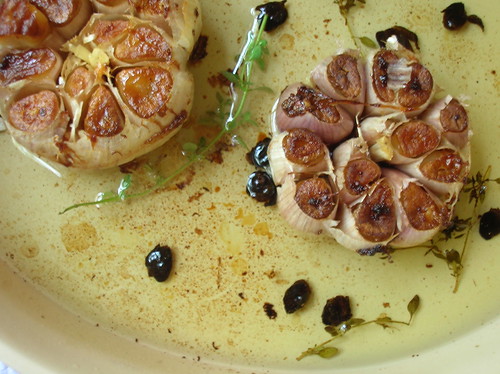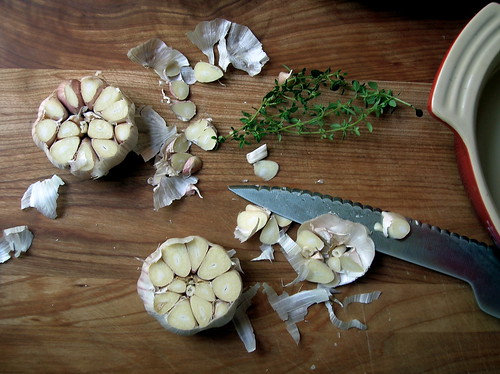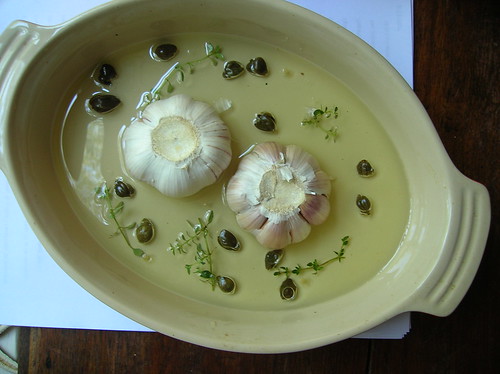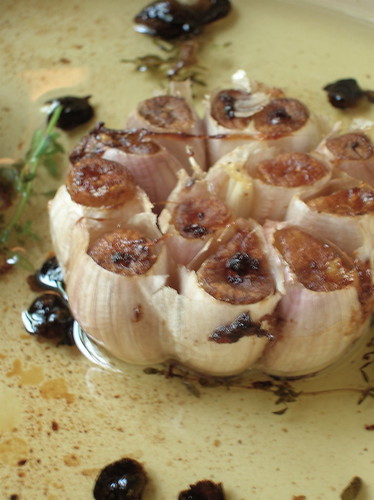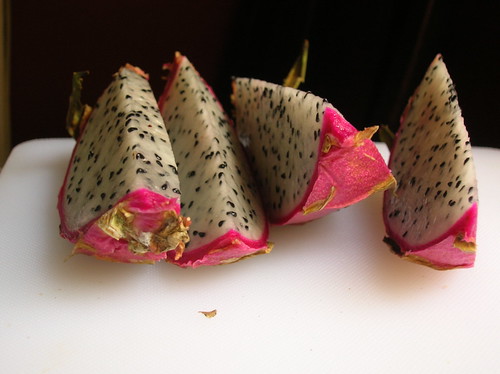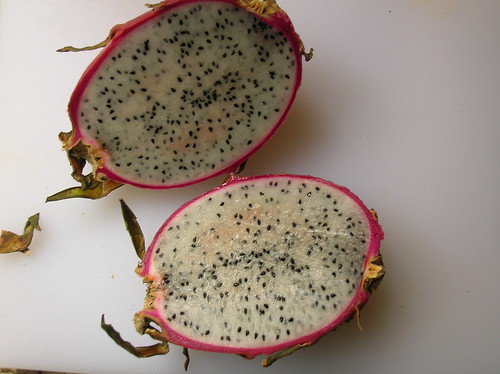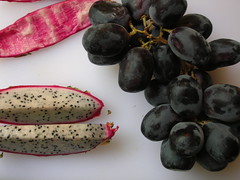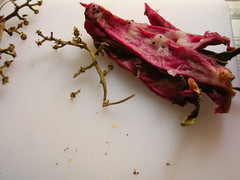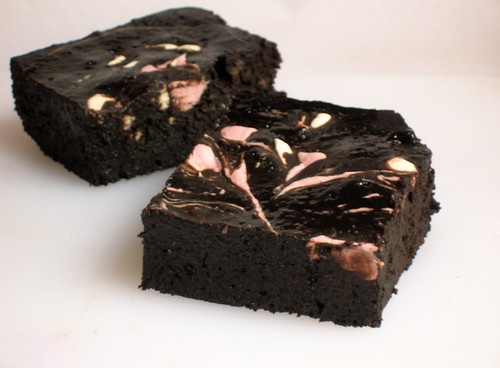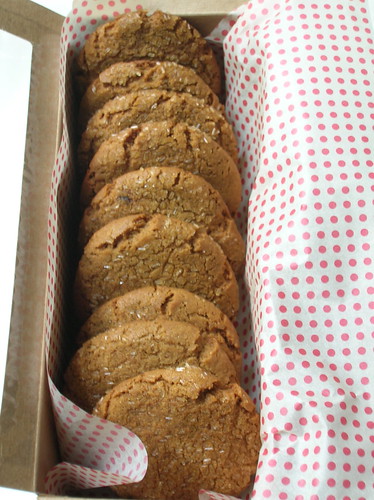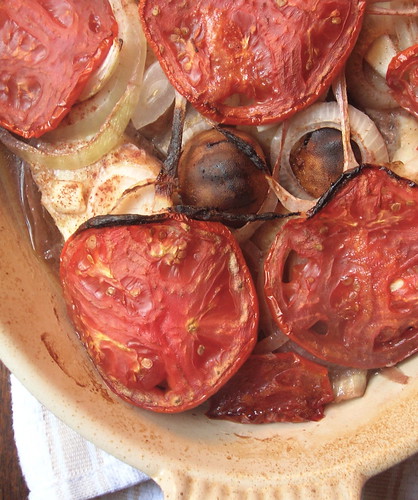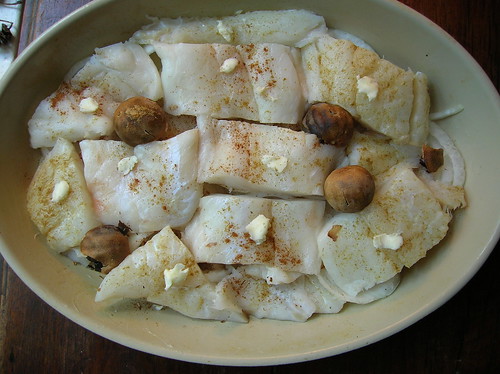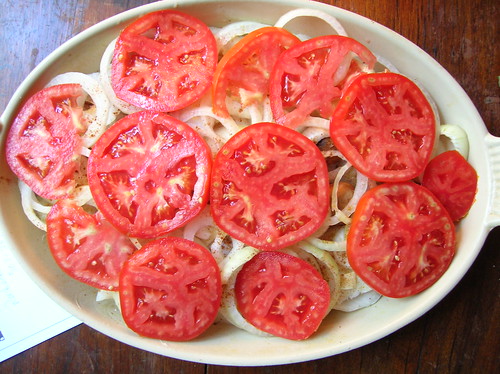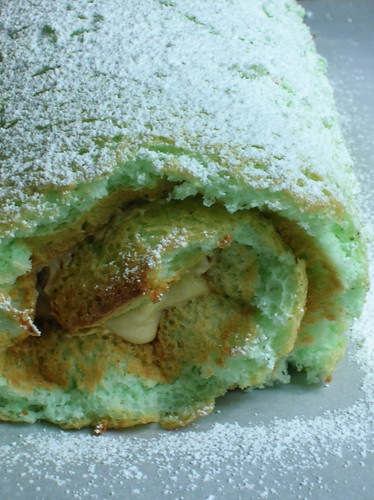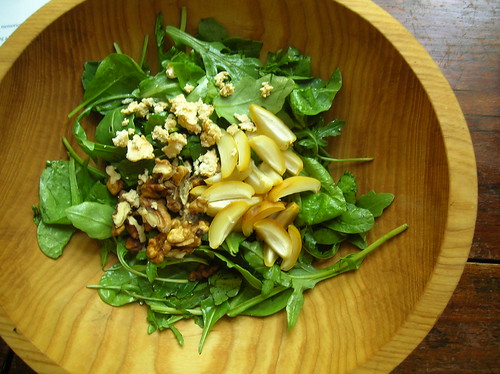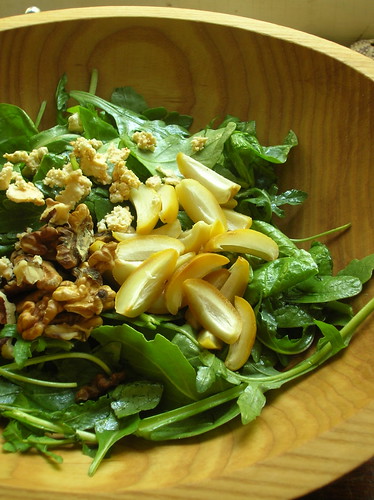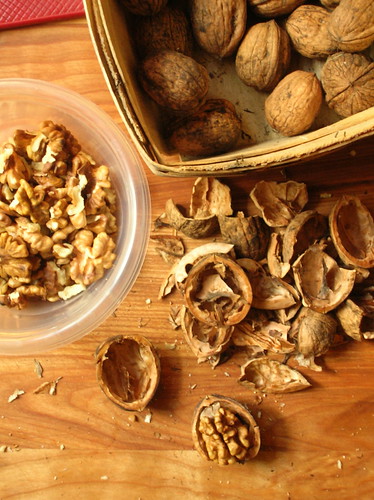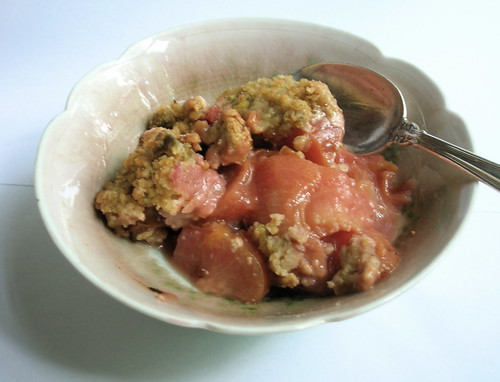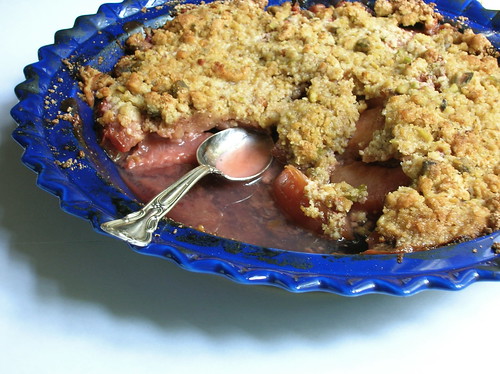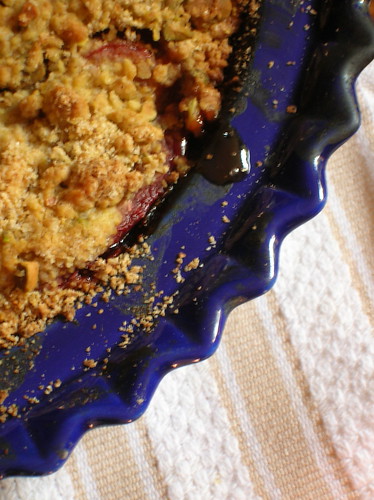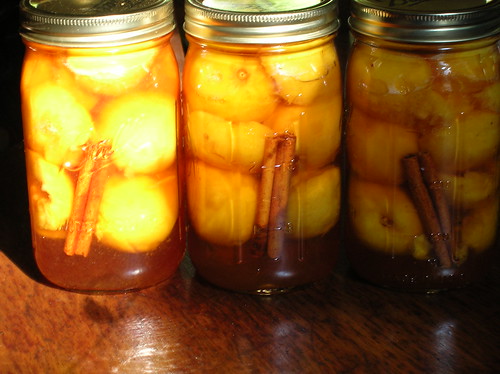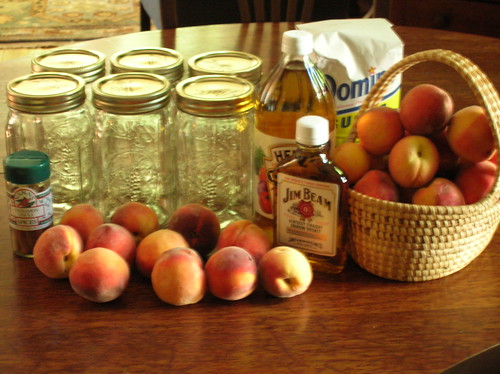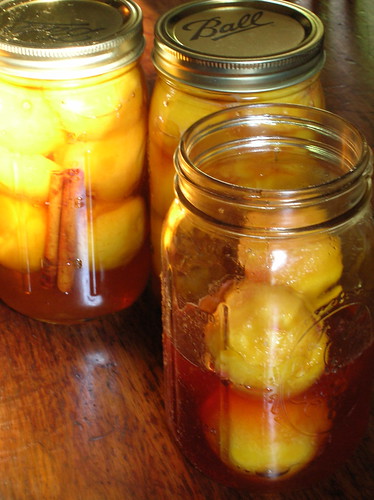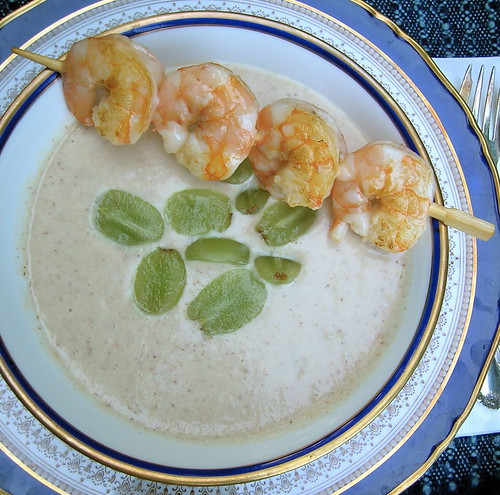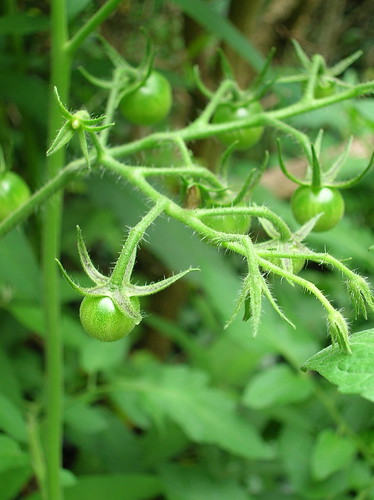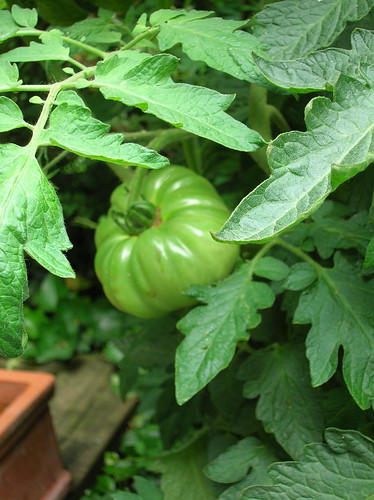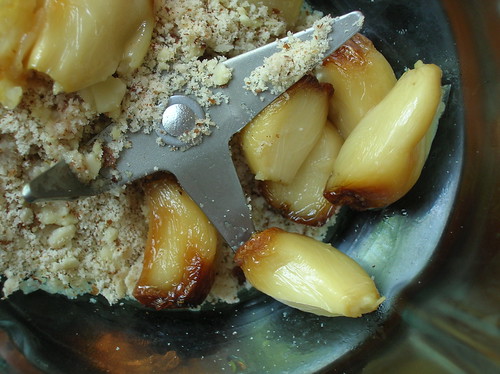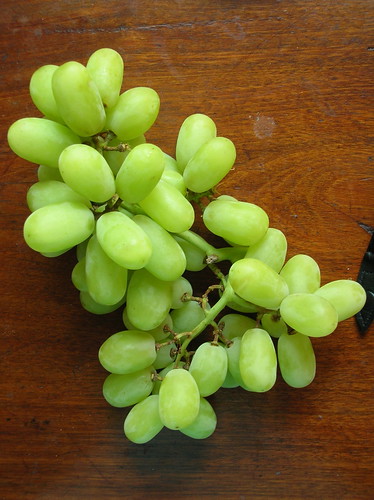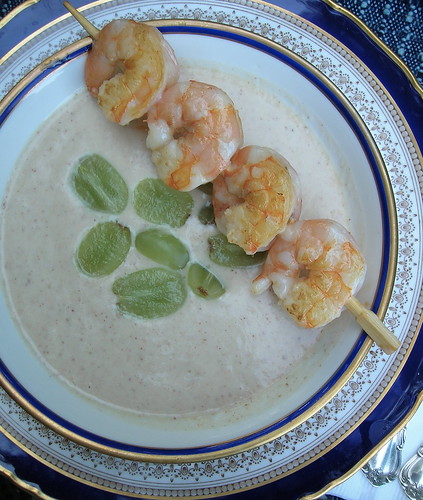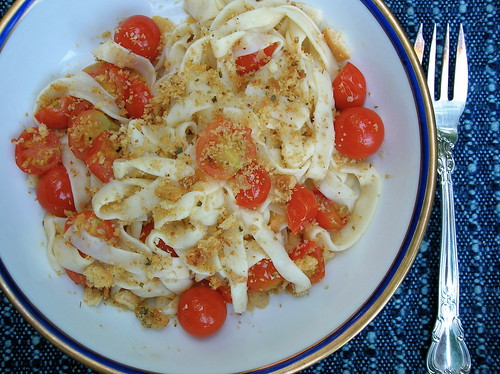
I first read about sweet 100 tomatoes in Mario Batali's Babbo Cookbook, and later in the Zuni Cafe Cookbook, two splattered, well-loved members of my cookbook collection. I have to admit, at first I thought they were pretentious, calling for a specific kind of tomato, surely any cherry tomato would do? But when I was planting tomatoes in the spring and saw sweet 100's at the nursery I immediately chose them; just the name is evocative enough. Now I can tell you that if you ever grow any tomatoes, grow sweet 100's, they're almost candylike in their sweetness and best of all they are amazingly prolific, you can even grow them in pots on your fire escape.
As the end of summer approached, I heard many people bemoaning the end of summer heirlooms, while others even admitted they'd be relieved when tomato-fanaticism was over. But anyone who actually grows tomatoes knows otherwise, just when I thought I could pull them out and plant things for fall, my tomato plants set all new blooms. The slightly cooler nights help set tomato blossoms (creating the fruits), so that when temperatures drop slightly at then end of August you've got a whole new crop to look forward to in October or up until the frost free date. Connoisseurs know that fall tomatoes are actually the best tomatoes.

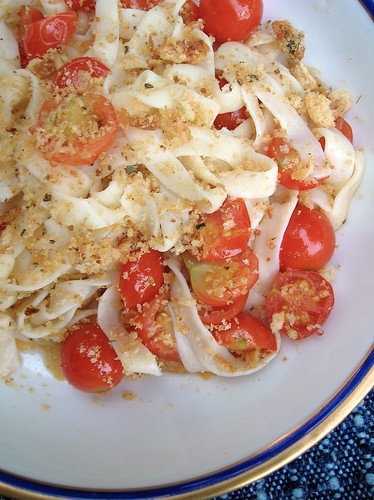
I let some of my tomatoes go (goodbye hard to grow Brandywines) to make room for broccoli and beets, but those sweet 100's are sticking around for a while, mainly because we love them in this particular dish. I first started making a side dish of sauteed tomatoes, and we fell in love with the simplicity of just warm garlicky tomatoes, especially the way the little ones burst in your mouth. It was the obvious next step to make it a sauce for pasta, in our case whatever spaghetti or fettucini was in the cabinet. It sounds rather obvious, but this simple combination is truly spectacular.
A few notes on the recipe: I generally shy away from olive oil by the cup-full, but you really do need to be generous here, and don't worry you won't ingest it all. That oil is going to infuse with garlic and then it's going to coat those wonderful tomatoes and then it's going to coat the pasta, and you really don't want to have to worry about anything sticking, and when you transfer the pasta to your serving bowl any excess oil will stay behind in the pan.
When I'm feeling zealous I like to add a crunchy breadcrumb topping to this simple pasta dish. Toasted breadcrumbs (specifically pangrattato) are a traditional addition to pasta in Sicily. Whenever I've made pasta dishes with breadcrumbs, the crispy crumbs just went limp and mushy in the sauce, I always thought I was doing something wrong, but I recently learned from Amanda that this is actually the way the dish is supposed to be, the breadcrumbs were a way for poor people to bulk-up the dish. Personally, I don't like soggy breadcrumbs, so I devised my own solution by adding some ground almonds to the topping which stay nice and crunchy atop the pasta. I like the contrast they add, but the dish is good even without them.
You've got a good bit of tomato season left, and if you make this you're guaranteed a few moans of gustatory pleasure, which is pretty impressive for a 5 minute pasta dish. I'm not saying you have to use sweet 100's, any cherry tomato will do, but I know I'll never go back.
I'm off to Portland, Oregon, for a few days, so if I'm a bit slow in posting and responding to comments I hope you'll understand.
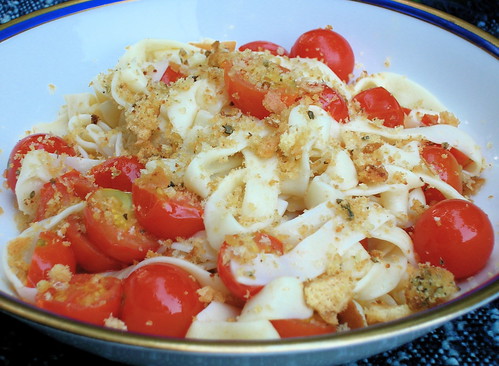
Pasta with Sweet 100 Tomatoes and Crunchy Breadcrumbs
The ultimate seasonal version of classic pasta and tomatoes, we like to make it with the sweet 100 tomatoes that come in September. Serves 4.
1 lb pasta, like spaghetti or bucatini
1/4 cup olive oil
4 garlic cloves, thinly sliced
2 pints cherry tomatoes, like Sweet 100's
salt and pepper
for the topping:
olive oil
1 1/2 cups fresh breadcrumbs
1/2 cup finely chopped or roughly ground almonds
1 tbl minced fresh basil or garlic chives
1. For the topping: Combine the breadcrumbs, almonds, and herbs in a bowl with some salt and pepper, rub everything together with your finger tips to combine. Heat a glug of olive oil in a saute pan. Add the breadcrumb mixture to the pan and cook, stirring frequently, until the mixture is well toasted and browned. Put the bread crumbs back in the bowl and set aside.
2. Halve about half the tomatoes, leaving the smaller ones whole.
3. Set a large pot of water to boil and cook the spaghetti according to package instructions until al dente. Meanwhile, wipe out the skillet you used for the breadcrumbs and heat the 1/4 cup of olive oil in it. Add the garlic and cook over low heat until the garlic is soft, golden, and fragrant (but not too browned!), about two minutes. Add the tomatoes and cook, swirling the pan occasionally, until the tomatoes are just about to burst. Season with salt and pepper.
4. When the pasta is done, use tongs to transfer it to the pan with the cherry tomatoes. Toss everything together over the heat just to combine, about a minute. Divide the mixture among serving bowls and sprinkle with breadcrumb topping, serve immediately.
See Also: Growing Fall Tomatoes
________________________________

